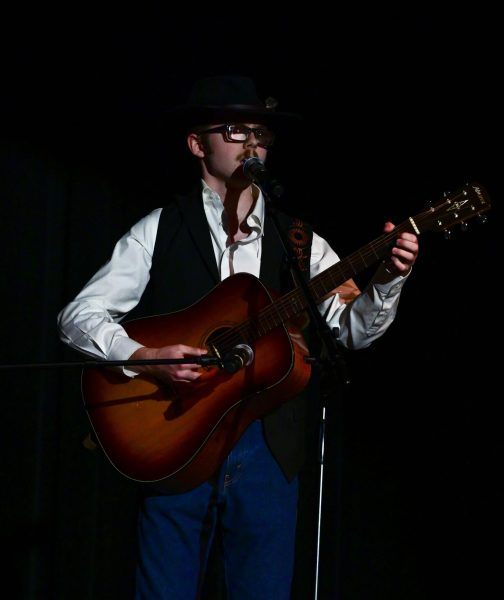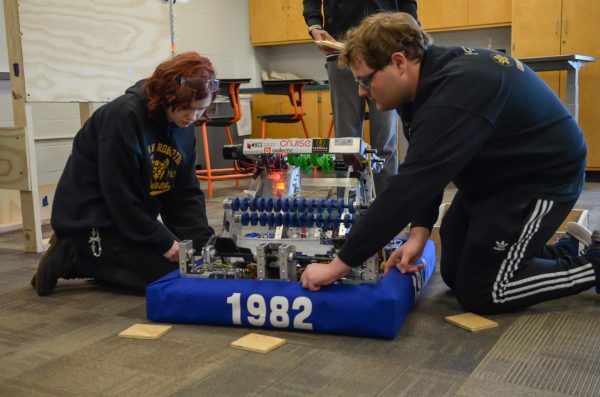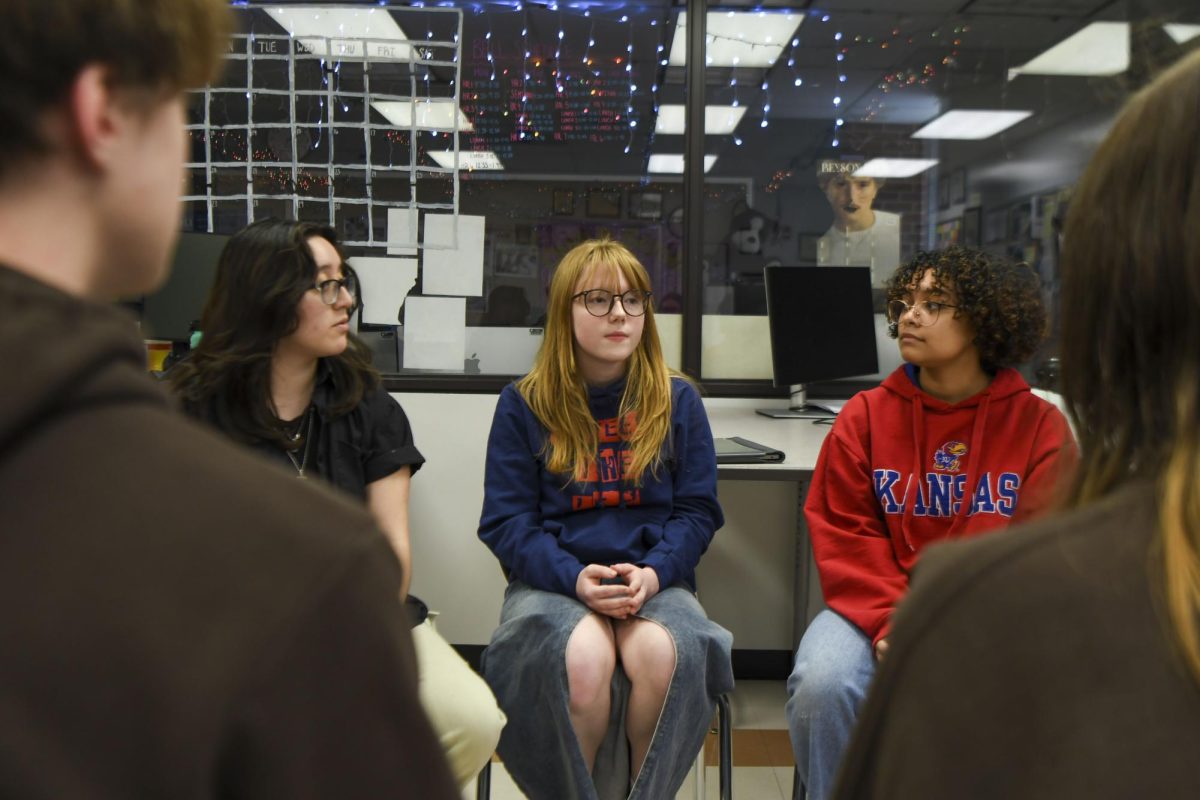It’s an eerie feeling to look around a room and see nothing but complete shock on everyone’s faces. 20 children, six adults — dead inside an elementary school. There is no hope, only sickened expressions and complete silence from a loss of words.
On Dec. 14 Adam Lanza went to the home of his 52-year-old mother, Nancy Lanza, and killed her with a shot to the face, using her own weapon. He then took his mother’s keys, two pistols and a high-powered rifle and drove to the scene of a soon-to-occur bloodbath.
Adam Lanza, a 20- year-old who attended Sandy Hook Elementary as a child, armed with two handguns, opened fire inside the school in Newtown, Conn. It’s almost as if you have to see the gaping mouths and hear nothing but gasps for it to set in: this is reality.
The last sounds from the school’s intercoms were screaming, according to one of the survivors. After his rampage the gunman pulled the trigger on himself, ending his life inside the school building as law enforcement arrived. This isn’t news from behind a television or computer screen: it’s an American tragedy.
This cataclysm was a month ago, but I still clearly remember sitting in the journalism room, flipping through channels and seeing the faces of crying children. I remember silence, I remember wide eyes and I remember the word “no.” No, this couldn’t have happened; no, not to children. I remember the confusion as many different stories from different news sources began to contradict one another. Most of all, I remember watching the death toll hopelessly rise throughout the day.
True, there have been many school and mass shootings, but this is the first one that I can say I’ll remember for the rest of my life. I have no connection with anyone involved, I’d never heard of Newtown or Sandy Hook Elementary, but there was a point where I cried, for both the children and their families, and I joined a sorrow-filled nation in a day of silence.
On average there are about 20 mass shootings in the U.S. each year. The Sandy Hook Elementary school has made an infamous name for itself as the deadliest elementary school massacre and the second-deadliest school shooting in U.S. history, trumped only by the death count of 32 killed in the Virginia Tech massacre of 2007.
Many speculated, in the days following the incident, that life after Sandy Hook would be like life directly after the Columbine school shooting of 1999 in Littleton, Colo., where children were suspended for bringing nail clippers to school.
Now, a month later, Northwest has already posted new signs on all doors reminding visitors to check into the office and warning all that guns are not allowed on school property. Schools across the U.S. have made their weapons policies more severe and are taking more steps to keep weapons off of school grounds.
As for gun-control, automatic and semi-automatic weapons, at least, should be taken out of the hands of all who own them, citizens have no necessity. In reality this may never happen; not because such regulations may not be made into laws, but because guns can still be smuggled into the U.S. and bought illegally. Use illicit drugs for example: they are illegal in most circumstances in 48 states, but the industry still earns a minimum of $5 million per year.
On Sep. 13, 1994 the Violent Crime Control and Law Enforcement Act was signed into law, banning all assault weapons, but this ban only lasted 10 years and expired on Sep. 13, 2004. In earlier years only 2 to 8 percent of all shootings involved an assault weapon. Between 1994 and 2004 there were still 23 school shootings, and although the number of homicides went down in those ten years, the number of mass shooting has doubled in years since the ban was lifted. Restrictions on gun-owner policies may be in the near future as President Obama supports a reinstatement on the weapons ban.
According to the Washington Post, as of Jan. 6 a group led by Joseph Biden has been seriously considering a system which requires background checks on anyone looking to buy guns and tracking all movement of weapons through a national database, working around the National Rifle Association (NRA).
As for gun manufacturers, demands for guns of all types have been in large demand since the Sandy Hook massacre in fears that restrictions on gun ownership are near.
I believe that, in all the madness of the past month, an old and recurring issue, which has been overlooked before, is being pushed to the forefront of all controversy. What was Adam Lanza, or any school shooter, thinking when he decided to pull the trigger?
After questioning former classmates and friends of Adam Lanza, journalists and police have made a profile for this mass-killer. He was a quiet child, he didn’t talk very much unless talked to first; a personality trait shared of most persons who go on to participate in a school shooting.
Adam’s mother was a “doomsday prepper,” known to hoard food and water by family members. In her preparation, she developed a love for guns, and ironically taught Adam how to use a gun at local shooting ranges. Although plausible, it is not known for sure if Adam took his mother’s beliefs too far when he walked through the doors of Sandy Hook Elementary.
Mental illnesses due to past experiences, such as divorce or abuse, are common in almost all killers involved in shootings and acts of extreme violence.
The first recorded mass school shooting was the University of Texas Clock Tower Sniper of 1966 — the shooter, Charles Whitman. Whitman would complain of severe headaches in the weeks before climbing the Clock Tower at UT with a sniper rifle, which he had said was a fantasy of his (of course, no one took him seriously at the time).
As requested in his suicide note, an autopsy was performed, and Whitman was diagnosed with glioblastoma, a tumor that pressed against the area of the brain that controls strong emotions. The prefrontal cortex is the part of the brain that controls focus, planning, impulse control, emotional control, empathy, judgment and insight. Killers usually lack functions in this portion of the brain or lack it altogether, leaving them feeling as if there is no value in a human life.
One thing that most school shooting cases have in common is leakage, or a point at which the potential shooters show warning signs and a change in behavior. An obvious sign, as seen in suicide notes and messages between shooters and friends, is a desire to murder large amounts of people who they feel are incompetent. If warning signs were taken more seriously, lives would have been spared, and if the trend continues, more may be lost.
I can’t imagine the pain, and the desire the families of the deceased in every every mass shooting must feel to see their children and loved ones smiling, laughing, breathing again. The blatant disregard for human existence has stamped a price tag on life — 20 cents — the equivalent of a bullet.
“Our hearts are broken for the parents of the survivors as well,” said President Obama in his speech, given at the White House, about the massacre. ”For, as blessed as they are to have their children home tonight, they know that their children’s innocence has been torn away from them too early, and there are no words that will ease their pain. We’re going to have to come together and take meaningful action to prevent more tragedies like this, regardless of the politics.”

















